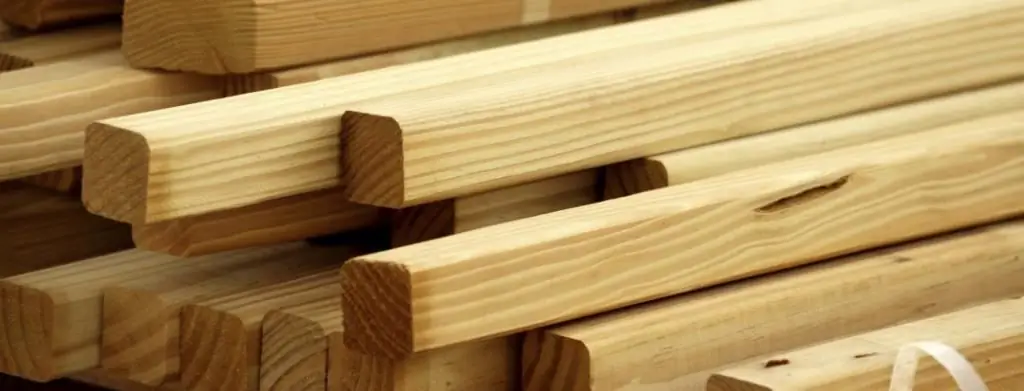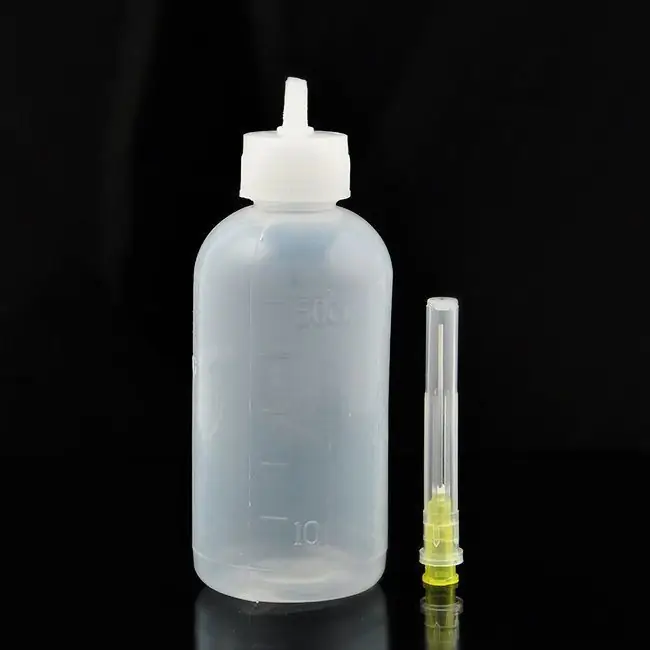2025 Author: Howard Calhoun | [email protected]. Last modified: 2025-01-24 13:10:33
When you want to assemble your own electronic device, you need to stock up on a soldering iron, solder and rosin. Of course, we should not forget about the details of the circuit itself, but now we are interested in increasing the quality of the soldering process. What is rosin for? We will talk about her now.
What is rosin?

You have probably noticed in stores that sell components to create their products, a transparent vitreous substance that is somewhat similar to amber in both its appearance and color. This is pine rosin. This substance was first obtained in the Greek city of Colophon and was originally called "Colophon resin". It was mined from gum resin. It was also obtained from various pine species, extracting turpentine and other volatile substances from it using a steam bath. At the same time, all non-volatile impurities were merged. The distillation was carried out using steam, the temperature of which was 200 degrees. Such an indicator does not lead to the decomposition of rosin.
Modernity
Now rosin can be obtained from crushed pine wood using special solvents or extracted from tall oil or cellulose. Depending on the method, suchspecies:
- Pine.
- Tall.
- Extraction.
Modern rosin is 60-90 percent resin abietic acid, 1-12% fatty acids and neutral substances (such as triterpenoids, sesquiterpenoids and diterpenoids). It cannot be dissolved in water, but alcohol, ether, benzene, acetone, and somewhat worse kerosene can do this with it. At 40 degrees, the rosin begins to soften, and at 100 it already melts. When the temperature reaches 250 degrees, it boils. If you add mineral and organic substances to it, you get soap. If you dissolve it in a polyhydric alcohol, then you will have rosin ester. As you can see, there are many applications. Of course, it is safest to do something when pine rosin is at hand. The manufacturer must make sure that the products meet all the requirements of state standards (there are no third-party impurities or anything else).
Properties

Pine rosin has the best characteristics. GOST 19113-84 ensures that products for this purpose meet quality and safety standards for people who work with them. It begins to soften at 68 degrees Celsius. It also contains almost no fatty acids. This rosin is considered a completely natural and environmentally friendly substance. It has an amber yellow color. Extraction and tall rosin are considered artificial. They also differ in color. But, despite the different methods of obtaining, their properties are considered closeto those that have a natural product, which is pine rosin. The enhanced adhesion that exists between surfaces when using this design is highly appreciated. Rosin also has good detergent and penetrating (for ether and alcohol solutions) properties. The latter led to its use as a waterproofing agent. It can also be used as an adhesive.
Practical application

The main area of application today is to assist in the soldering of metal parts. So, pine rosin as a soldering flux shows a positive result. Despite the fact that there are a significant number of more modern chemical developments, it is still used in electronics and radio engineering. So, molten pine rosin can easily eliminate the oxide layer that is on the surface of the soldered parts. It is also important that it reduces the surface tension of the solder. Due to this, it spreads more evenly over the working plane. The use of such a flux increases the quality of the solder. It also has a certain protective effect against various environmental fumes. Also, acid neutrality also affects the preservation of popularity. This is possible thanks to the use of raw materials of natural origin. Therefore, the soldering point does not corrode over time and there is no current leakage. This is of particular importance during the assembly of electronic circuits. Also, pine, tall and extraction rosin canbe used together with pure ethyl alcohol in a ratio of 4 to 6 to obtain a liquid flux. Even those who hold a soldering iron for the first time in their lives can use rosin. First you need to warm up the sting and dip it into the frozen substance. Then they take solder, which is applied to the surface to be soldered and the part. If necessary, with the help of a soldering iron tip, it must be evenly distributed. As a result, a monolithic mass should be obtained, which will connect everything that is needed together. There are applications in other areas of human activity. So, rosin is traditionally used to rub the strings of bowed musical instruments, and if you grind it to a powder state, you can get high-quality smoke effects.
Conclusion

As you can see, rosin is very effective in many areas. And a confident leadership position among all types is occupied by natural pine material. If you want to know in detail what pine rosin is, GOST 19113-84 will help you with this.
Recommended:
Methods for determining the density of dry pine

Any material has a certain density, but in some cases it may be different, for example, for wood. The density of this material is different for different types of wood. It depends on the origin of the tree, the weather and many other factors
Alcohol-rosin flux: properties, application, self-production

Today, soldering is not the most common connection method, but it is still used quite often. Flux is always used for this operation. It can be not only purely rosin, but also a solution based on it. It's about alcohol-rosin flux
Short-range air defense system "Pine": performance characteristics, photo

With the development of air-military equipment, it became necessary to protect the personnel and weapons of the ground forces from a sudden attack by the enemy from the air. To this end, short-range anti-aircraft missile systems began to be adopted by the Russian army. Their main purpose is to protect units from attack by enemy aircraft in all types of combat, as well as on the march
Rosin is a very interesting substance

Rosin is an amorphous, brittle substance with a vitreous structure and color from light yellow to dark red. It is obtained after distillation of the volatile component from the resins of coniferous trees. The chemical properties of rosin (up to 90% resin acids, including the main one - abietic) make it insoluble in water, but soluble in ethers, alcohol, chloroform and benzene

